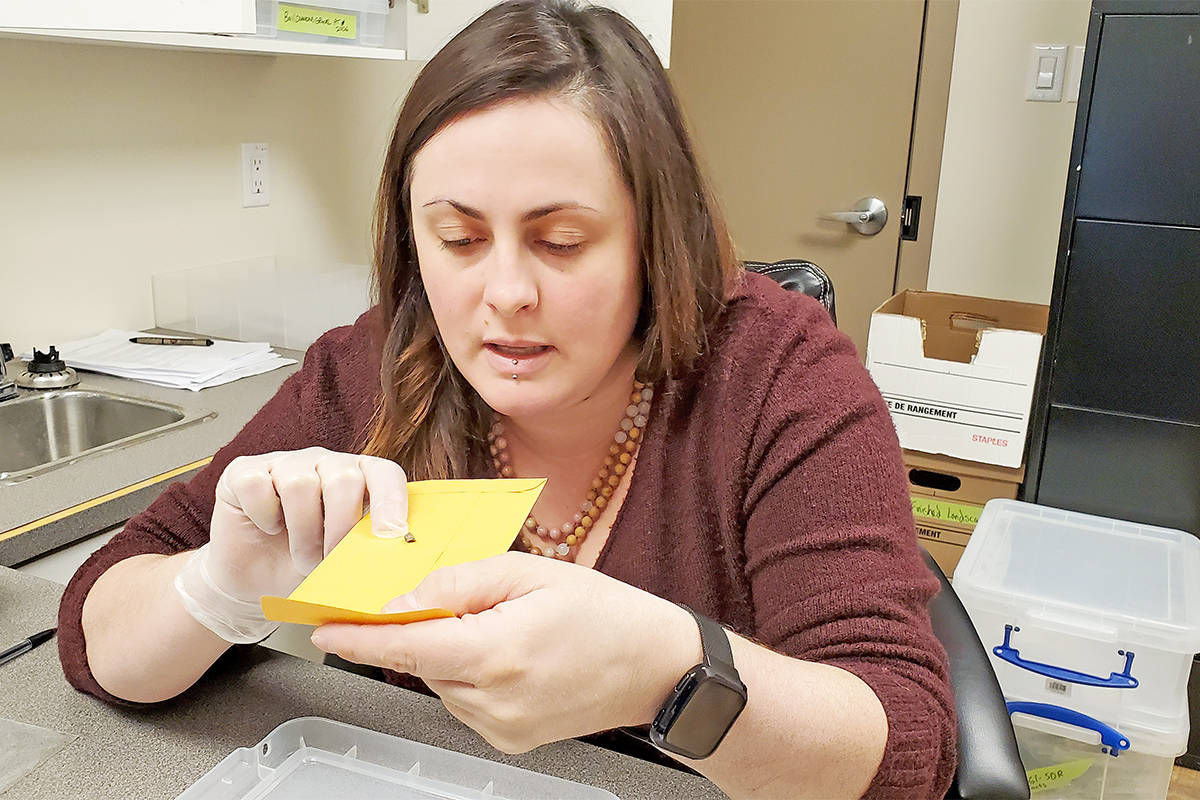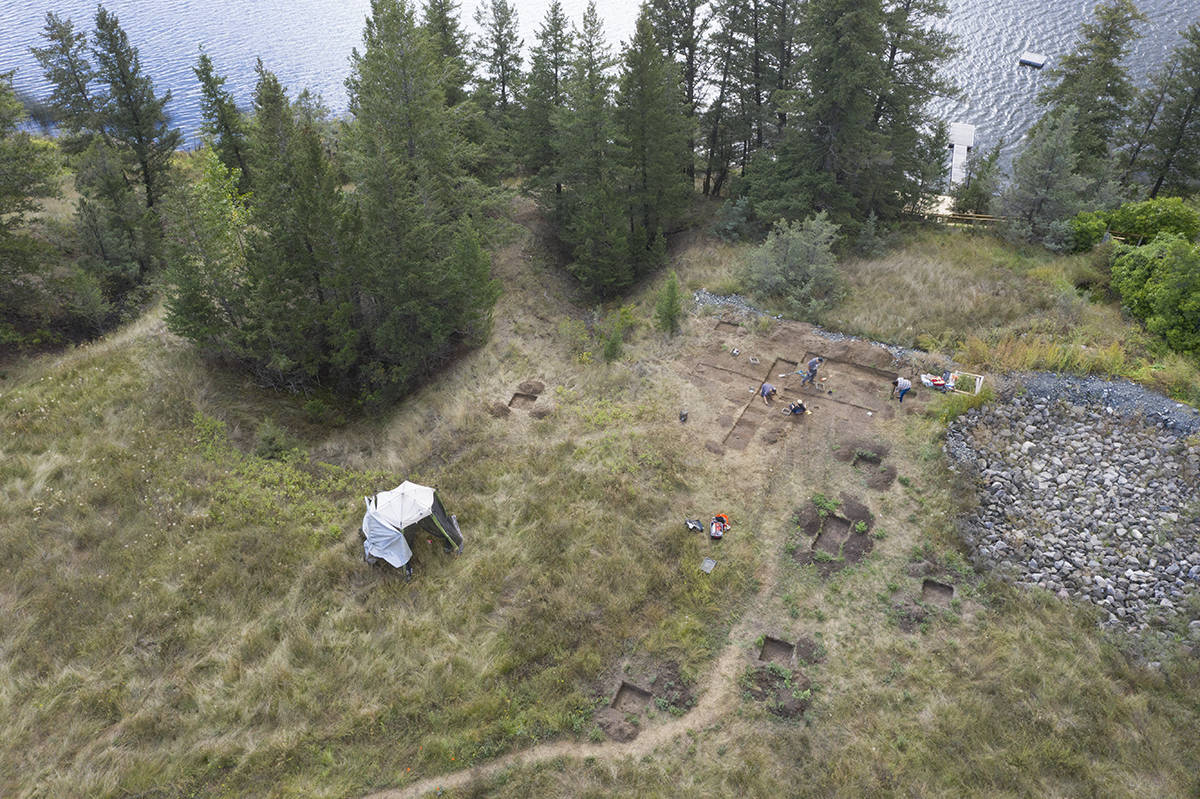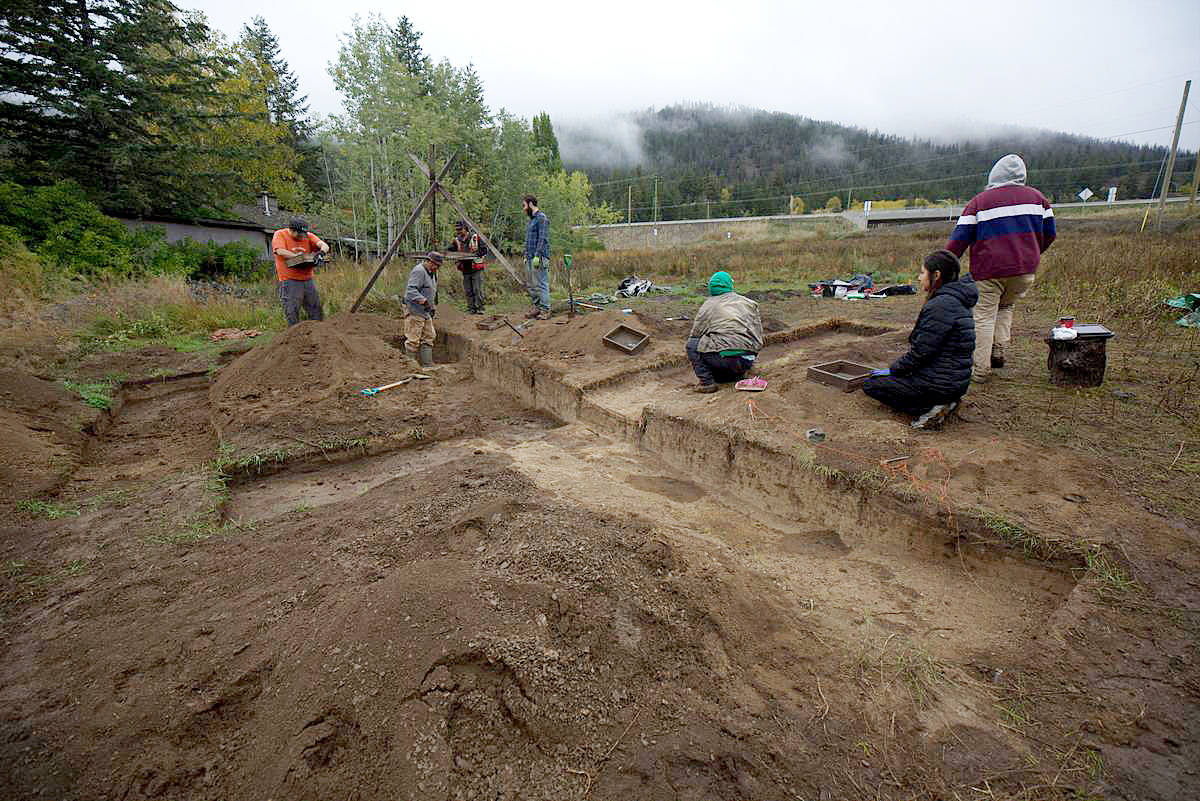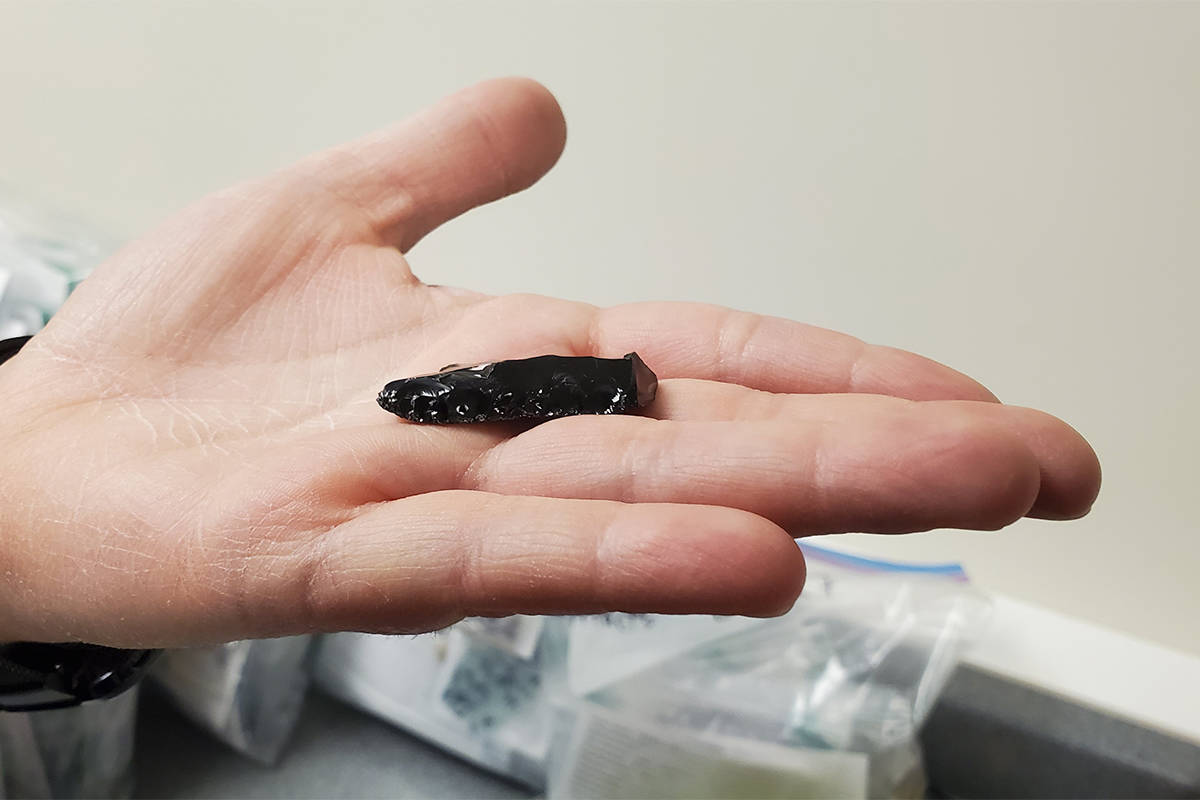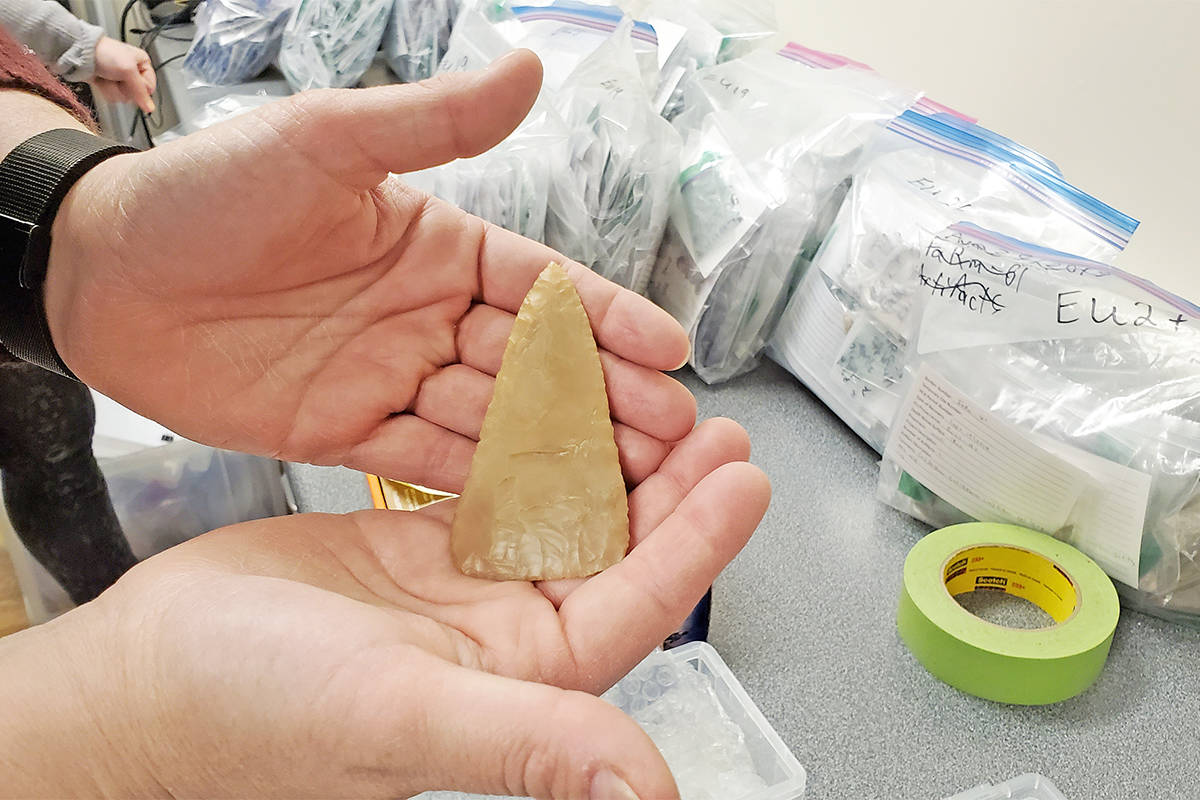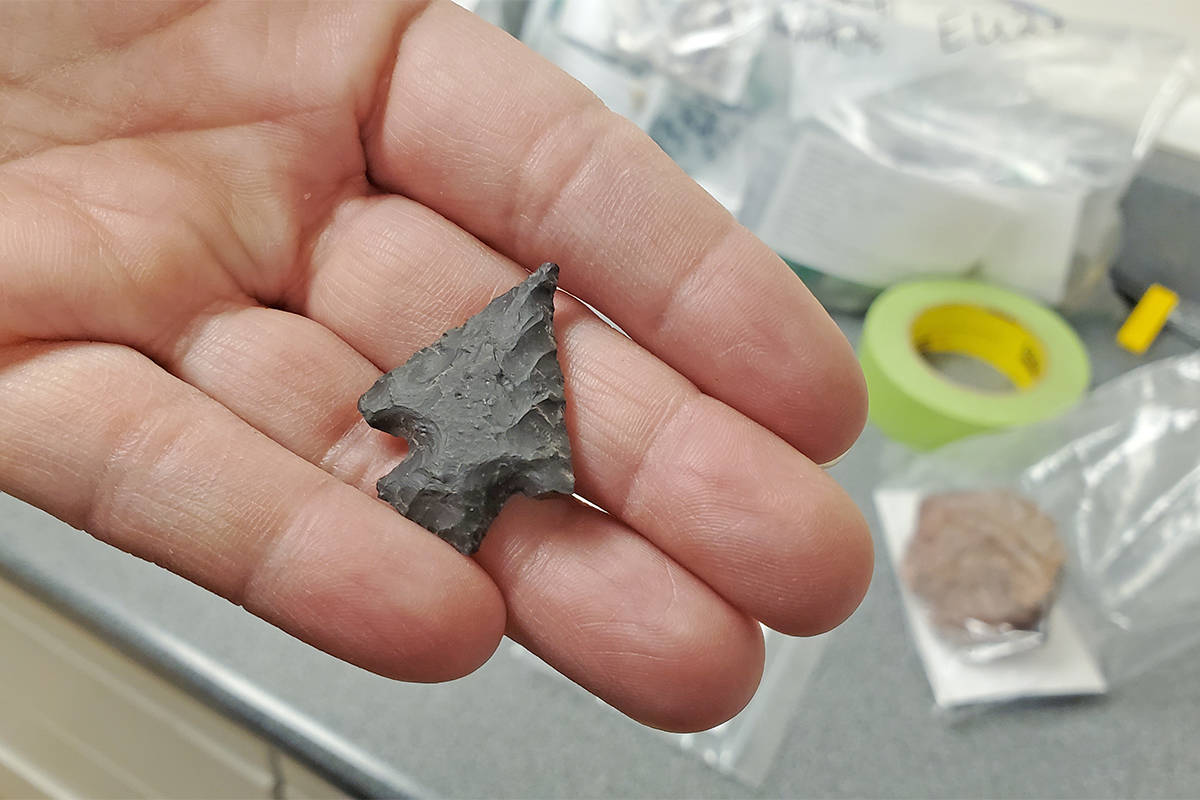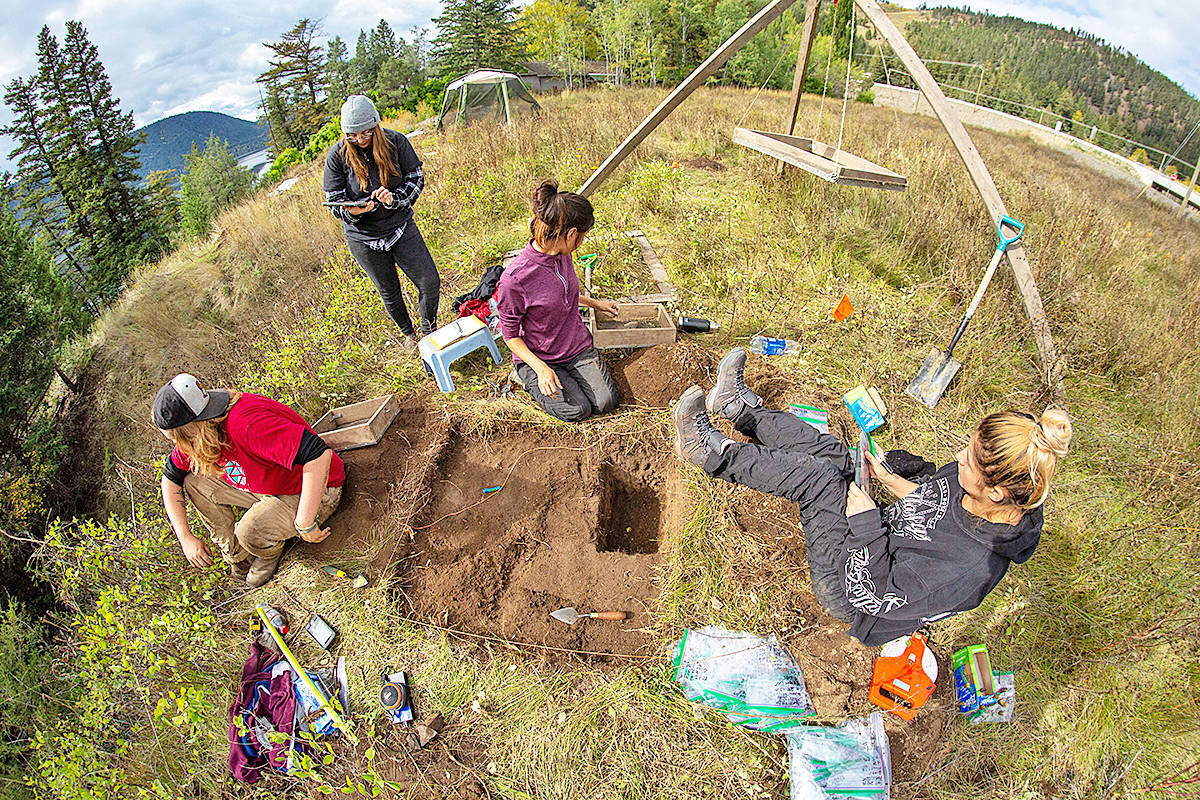One of last year’s mudslides near the newly completed Highway 97 four-lane project south of Williams Lake revealed a house platform and artifacts, some dating back to almost 4,000 years ago.
“We knew there was a previously recorded site there,” said Whitney Spearing, archaeologist and natural resources co-ordinator for Williams Lake Indian Band of the area they studied located at Sugar Cane adjacent to Sutton Road.
Read more: Owner says new four-laning project causes runoff problem
“The original archaeological assessment done for the highway project showed the site but we didn’t know it extended all the way down to the lake.”
When erosion started mid-February and early March 2019 in different areas adjacent to the highway project, Spearing and her team walked through with the Ministry of Transportation and Cantex Okanagan Construction Ltd. to do an assessment.
It was at the site next to the property on Sutton Road where they made a big discovery.
Crews dug six units and when they found a hearth and some charcoal they realized they were dealing with some sort of habitation, Spearing said.
Further exploration about 15 centimetres below the surface revealed a hard compact layer.
“We decided to go through the layer and with every scrape of a trowel there were 10 artifacts,” Spearing said.
“It was this hyper dense layer of little bits of bone, charcoal, ash, intermingled with hundreds and hundreds of broken little artifacts which were mostly from tools where someone snapped a piece off or someone sat there and re-flaked their tool.”
A north trench and an east trench were then marked off to develop a profile showing part of the house platform floor which was disc-shaped and shallow.
Spearing said crews also hit some soft spots, which indicated where post holes for supporting beams had been for a mat-covered lodge, a feature of summer village sites.
“In one 30 cm by 30 cm unit, 497 artifacts were found, so you can imagine how dense that is,” Spearing added. “We could have spent another two years there collecting.”
Between July and October 2019, 3,200 artifacts were collected, including 14 carbon samples, two ash samples, two ochre samples, one burnt seed pod and a fragment of a bone bead.
During the highway construction another site was discovered near a drainage pipe that goes down to the lake on the west side of Sutton Drive.
“We found a hearth feature down by the lake,” Spearing said. “That says to me that whole area was a summer habitation area.”
Read more: Pre-settler evidence reviewed as Williams Lake eyes Stampede Grounds for heritage park
The site was originally identified as Plateau Horizon, which would have placed it in the 2,400 to 1,200 before present (BP) time line.
Artifacts found last summer indicate the site goes back even further to the Kamloops Horizon and Shuswap Horizon which range from 200 BP down to 3,600 BP, Spearing said, explaining that before present is the year 1950.
“Interesting is the fact the site is continuous and we have people come back to that area and occupying it and leaving behind tools,” she said.
“We are lucky we have carbon samples because as long as they are not contaminated we will have 14 points to pinpoint dates exactly.”
Spearing said they also plan to create a reconstruction model depicting a portion of the floor that will be on display when the WLIB builds a new archaeology lab at its business development site at Coyote Rock.
In the meantime, she will be taking artifacts to Simon Fraser University later this spring for analysis.
“The assemblage from FaRm-61, which is what the entire site along the north side of Williams Lake is called, is going to shift what we know about archaeology in the Interior,” Spearing said. “We don’t have such a complex site with as many micro-blades as we do now.”
She also showed the Tribune a piece of bird bone in the collection that was hollowed for use as a bead, two arrowheads and a piece of obsidian, which Spearing said it is suspected came from Mount Edziza, a stratovolcano in the Stikine area of Northwestern B.C.
news@wltribune.com
Like us on Facebook and follow us on Twitter
